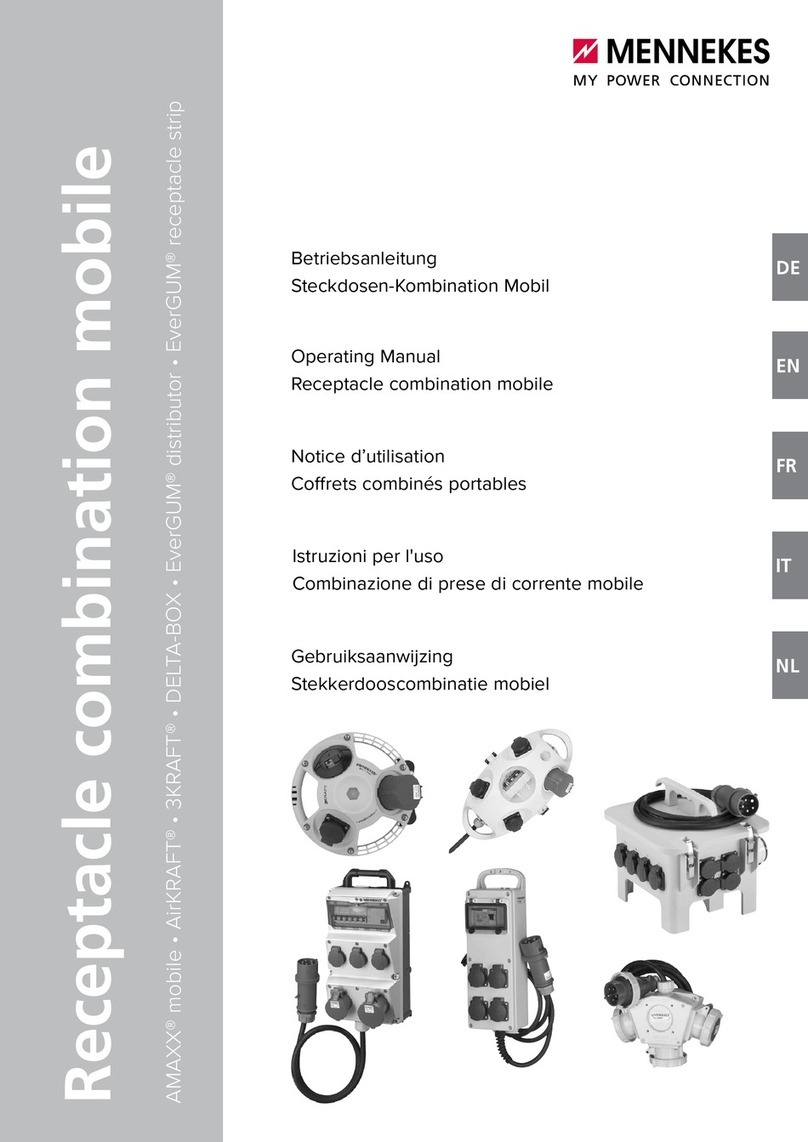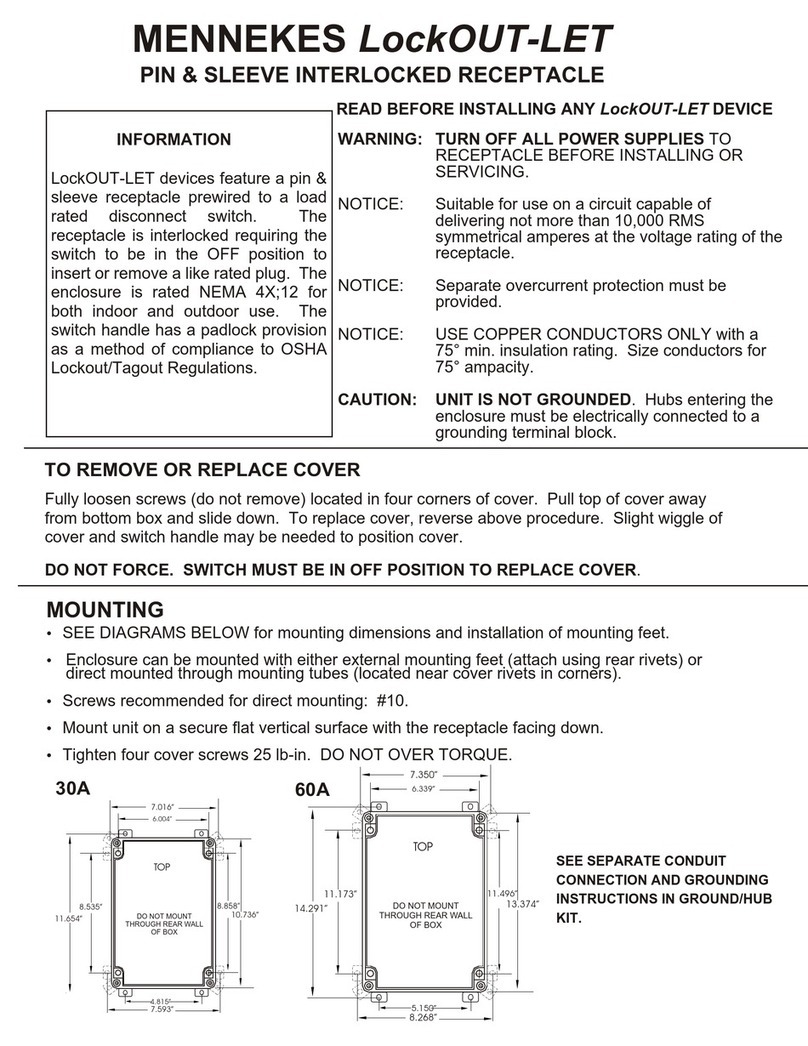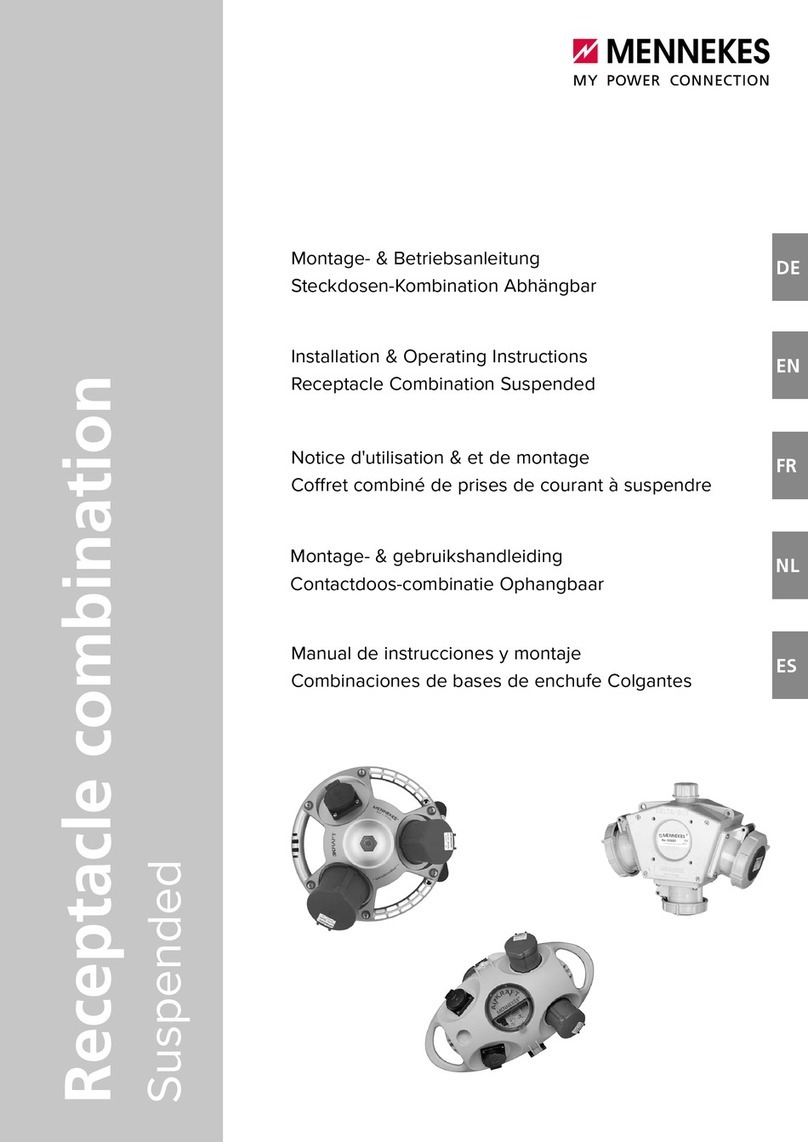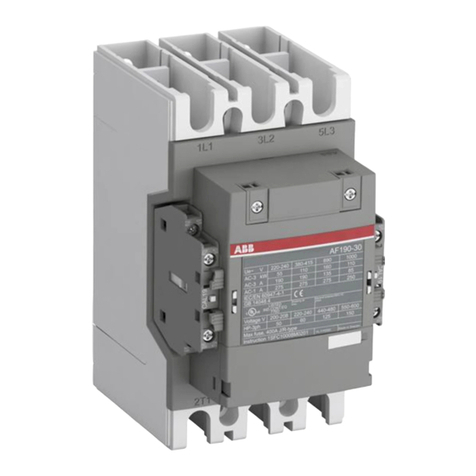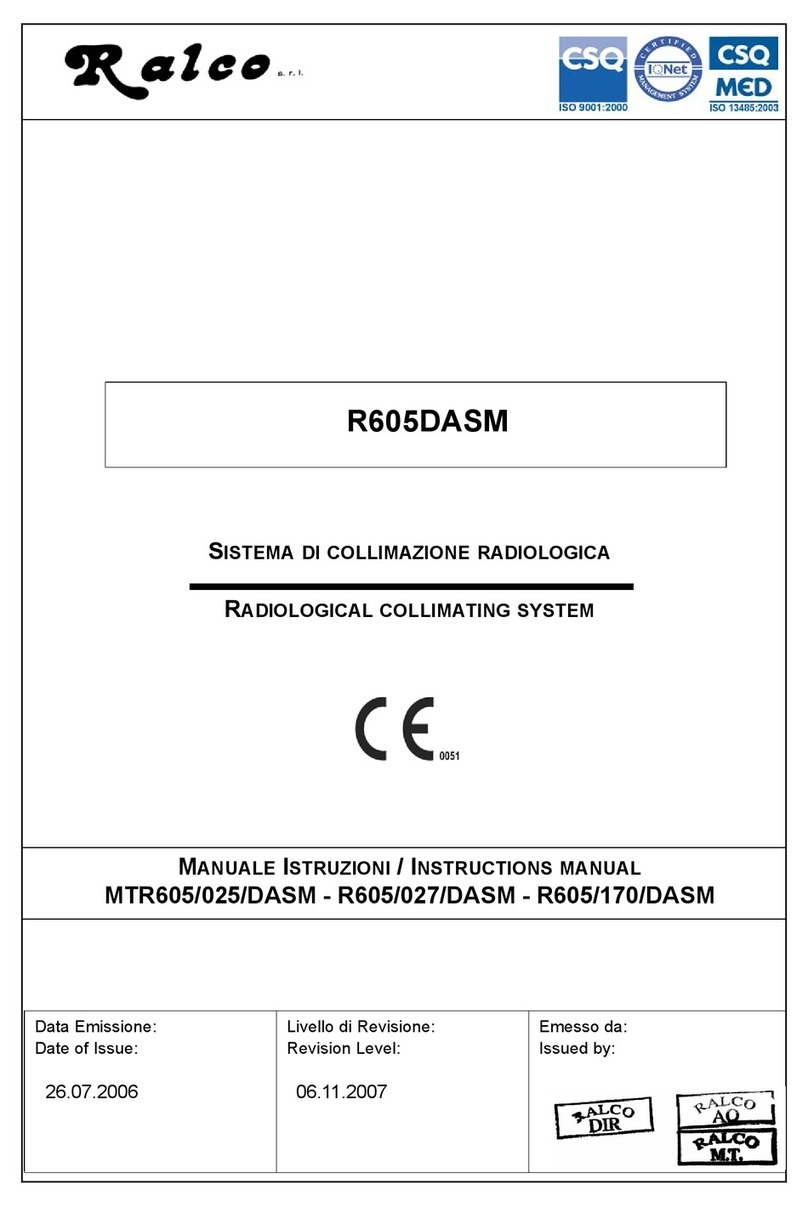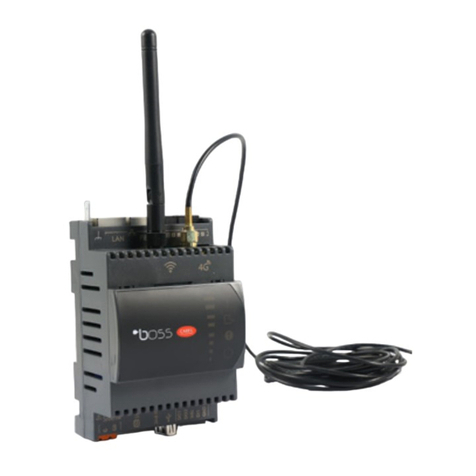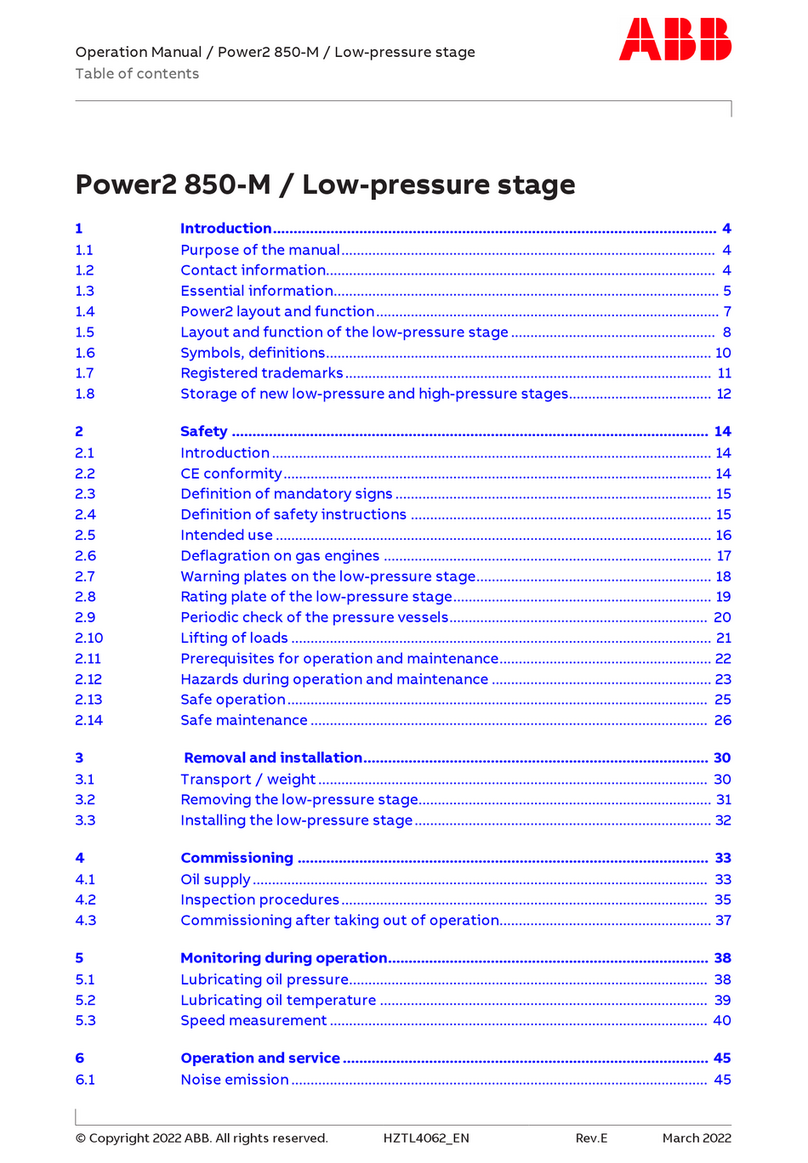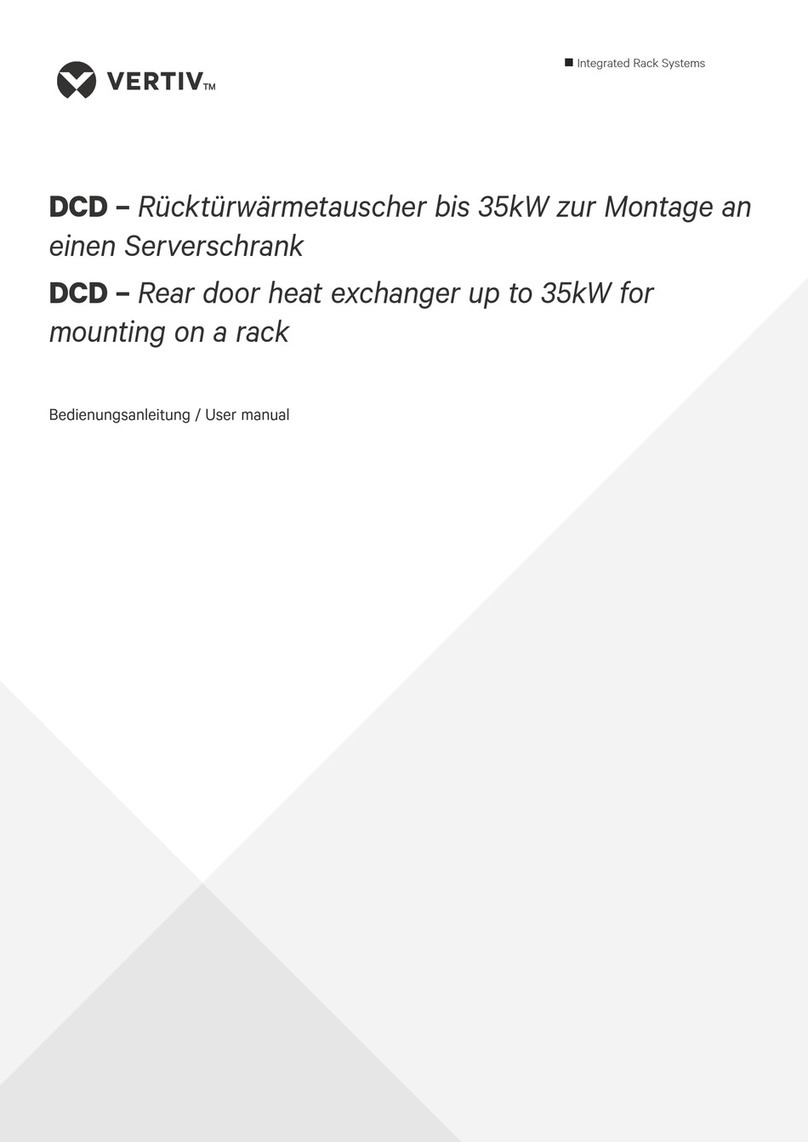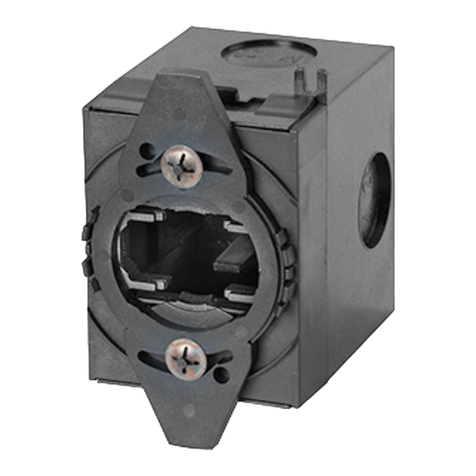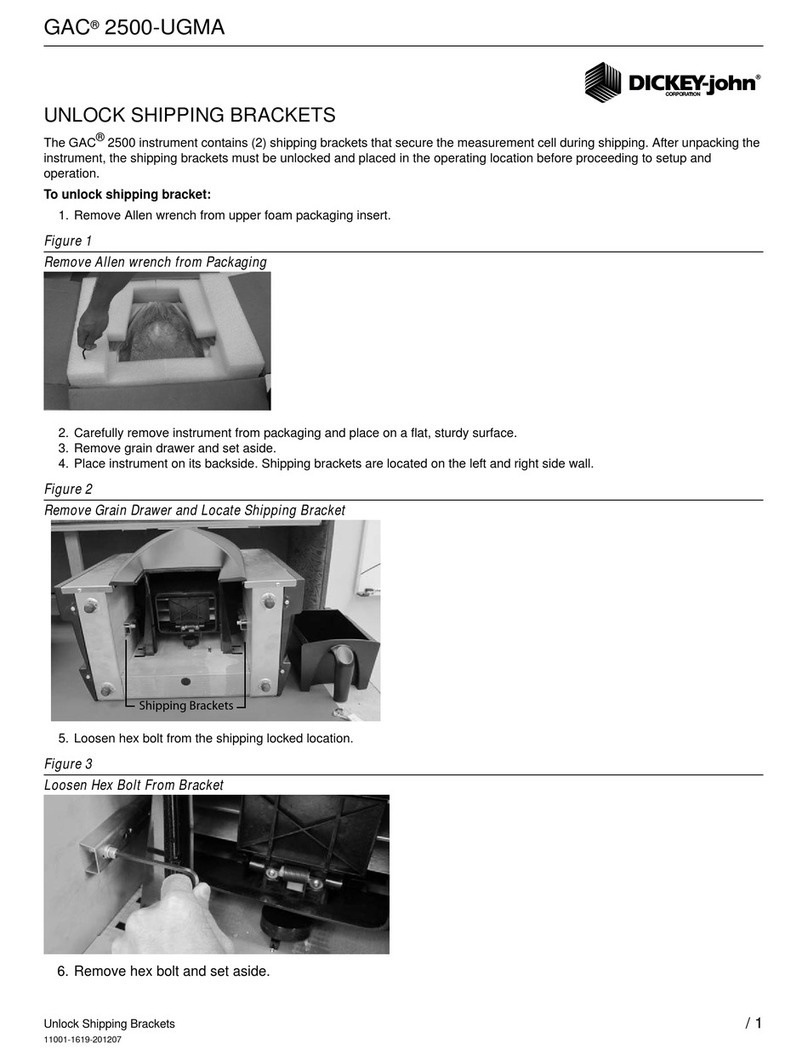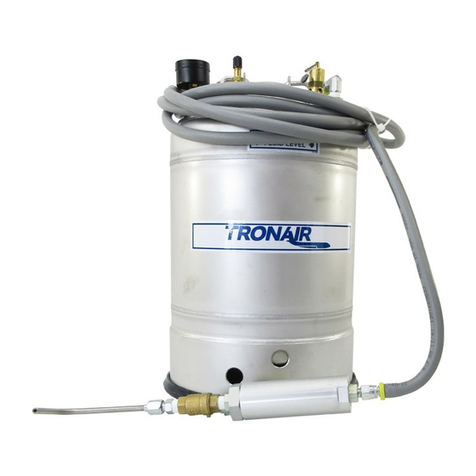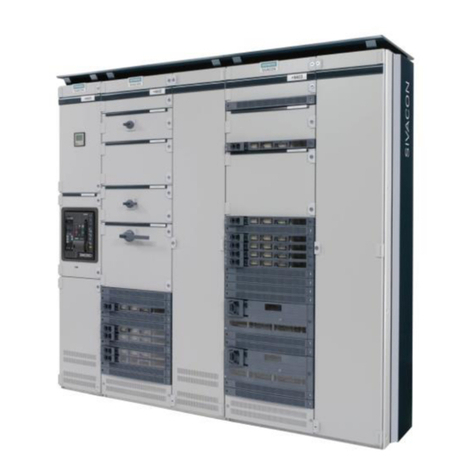Mennekes 3KRAFT Manual

EN
NL
FR
IT
Installation
& Operating
Instructions
01 / 07.2014
DE
EN
ES
FR
NL
Steckdosen-Kombination
Abhängbar
Receptacle Combination
Suspended
Combinaciones de bases de enchufe
Colgantes
Coffret combiné de prises de courant
à suspendre
Contactdoos-combinatie
Ophangbaar

Regarding this document
© Copyright MENNEKES Elektrotechnik GmbH & Co. KG
This document is protected by copyright.
The content of this document is the property of MENNEKES
Elektrotechnik GmbH & Co. KG and may not be duplica-
ted or reproduced, in whole or in part, without the prior
consent of the copyright holder.
Safety-related symbols
Danger
This symbol/text combination indicates imminent danger.
Failure to observe this warning will result in death
or major injury.
Warning
This symbol/text combination indicates a potentially
harmful situation. Failure to observe this warning can
result in death or major injury.
Caution
This symbol/text combination indicates a potentially
harmful situation. Failure to observe this warning can
result in light or minor injuries.
Attention
This symbol/text combination indicates a potentially harm-
ful situation. Failure to observe this warning may
result in material damage to the device.
General information
This note indicates additional, useful information on
a given topic.
Symbols used
• Required action
–List
Cross-reference to another passage in the document
Table of Contents
1. General information........................................... 3
1.1 Contact datails .................................................. 3
2. For your safety..................................................... 3
2.1 General safety instructions................................. 3
2.2 Intended use ..................................................... 4
2.3 Target groups .................................................... 4
2.3.1 Qualified electrician....................................... 4
2.3.2 Owner / User................................................. 5
2.4 Foorseeable misuse............................................ 5
3. Residual risks ....................................................... 6
3.1 Danger due to unsuitable ambient conditions ... 6
3.2 Danger due to a missing fuse............................ 6
3.3 Fire hazard due to heat accumulation................ 6
3.4 Danger due to condensed water ....................... 6
4. Device structure ................................................... 6
5. Installation and start-up ..................................... 7
5.1 Unpacking the device ........................................ 8
5.2 Checking the device for transport damage ........ 8
5.3 Sending back the device.................................... 8
5.4 Installing the device........................................... 8
5.4.1 Connection openings .................................... 9
5.4.2 Fastening elements........................................ 9
5.4.3 Installing the device....................................... 9
5.4.4 Opening the device ..................................... 10
5.4.5 Connecting the device................................. 10
5.4.6 Closing the device ....................................... 11
5.4.7 Checking the connection of the supply line. 11
5.4.8 Checking the sockets .................................. 12
6. Operation ........................................................... 12
6.1 Protective elements ......................................... 12
6.1.1 Exchanging the safety fuses......................... 12
6.2 Opening / Closing the inspection window ....... 12
6.3 Maintaining the protection class...................... 13
6.4 Connecting consumers.................................... 13
6.4.1 Connecting consumers on the device
in protection class IP 44.............................. 13
6.4.2 Connecting consumers on the device
in protection class IP 67.............................. 13
6.5 Removing consumers....................................... 14
6.5.1 Removing consumers from the device
in protection class IP 44.............................. 14

3
EN
EN
NL
FR
IT
EN
EN
NL
FR
IT
6.5.2 Removing consumers from the device
in protection class IP 67.............................. 14
7. Cleaning.............................................................. 14
7.1 Dry cleaning .................................................... 14
7.2 Wet cleaning ................................................... 14
8. Maintenance ...................................................... 15
8.1 Maintenance tasks........................................... 15
8.1.1 Checking the device for damage ................. 15
8.1.2 Checking the safety fuses............................ 15
8.1.3 Checking residual current devices (RCDs)..... 16
8.1.4 Checking the ceiling fastening..................... 16
8.1.5 Cleaning the device..................................... 16
9. Maintenance ...................................................... 16
9.1 Device inspection in a non-commercial
environment.................................................... 16
9.2 Device inspection in a commercial
environment.................................................... 16
10. Taking out of service and dismantling............. 17
10.1 Taking the device out of service....................... 17
10.1.1 Disconnecting the device from the mains .... 17
10.1.2 Opening the device ..................................... 17
10.1.3 Disconnecting and removing the supply line... 17
10.2 Dismantling the device .................................... 17
10.2.1 Securing the supply line against
accidental contact ...................................... 18
11. Faults .................................................................. 18
11.1 Troubleshooting............................................... 18
11.1.1 Residual current device (RCD)...................... 18
11.1.2 Miniature circuit braker and safety fuse....... 18
12. Storage and disposal......................................... 19
12.1 Storing the device............................................ 19
12.2 Disposing of the device ................................... 19
13. Technical data .................................................... 19
13.1 Name plate...................................................... 19
13.2 Device dimensions........................................... 20
13.2.1 Conductor cross-section of the supply line .. 20
13.3 Ambient conditions ......................................... 20
14. Anhang / Appendix / Annexe / Bijlage / Anexo
14.1 Anschlusswerte / Connected loads / Valeurs de
raccordement / Aansluitwaarden / Valores de
conexión
The information provided in this installation & operating
manual applies exclusively to the devices described in this
manual. This comprises the devices AirKRAFT®, 3KRAFT®
and DELTA-BOX.
Depending on the versions of the devices and due to diffe-
rent components, deviations from the illustrations in this
manual can occur. Moreover the devices can differ from
each other functionally or in their operation.
In addition to this operating manual, the scope of delive-
ry may also include additional instructions (e.g. for device
components) which must be completely complied with.
Moreover, for safe use of the device, the national statutory
regulations and provisions (e.g. accident prevention and
occupational health and safety regulations) in the country of
installation must also be complied with.
1.1 Contact details
MENNEKES
Elektrotechnik GmbH & Co. KG
Specialist factory for plugs and sockets
Aloys-Mennekes-Strasse 1
D-57399 Kirchhundem
Tel. +49 (0) 2723 / 41-1
Fax +49 (0) 2723 / 41-2 14
E-mail [email protected]
Internet: www.MENNEKES.de
2. For your Safety
2.1 General Safety Information
Electrical safety
• Do not make any modifications to the device or its
components (plugs, receptacles, etc.).
• Do not use adapter plugs in conjunction with the device.
• Avoid kinks in the supply line of the device and in the lines
of the connected consumers.
• Avoid mechanical stress on the device and on the supply
line.
• Keep the device away from heat sources.
1. General information

4
• When working with the device outdoors, only connect
electrical consumers that are approved for outdoor areas.
• Only have your device repaired by a qualified specialist
and only with original spare parts, so that the safety of the
device remains permanently intact.
Personal safety
• Keep away persons (e.g. people with handicaps or
children) from the device who are not able to accurately
assess the hazards associated with handling the device.
• Do not let people use the device who are not familiar with
it or who have not read this operating manual.
• Do not use the device in explosive areas in which
combustible fluids, gases or dusts are present - danger
of explosion and fire! Connected power tools generate
sparks that can ignite dust or fumes.
• Avoid autonomous start up of electrical consumers (e.g.
drill) by always switching them off via the consumers On/
Off switch first, before connecting them to the receptacle
combination.
• Do not use the device if you are under the influence of
drugs, alcohol or medication. This can result in serious
injury.
2.2 Appropriate Use
The receptacle combination is to be exclusively used as
suspended, stationary power distribution equipment for
internal and external areas and is intended for mounting on
the building's ceiling or mounting on a suitable structure.
This also determines the position of use of the device and
the latter may exclusively be used in this position.
The device is not intended as mobile power distributor and
not for mounting on a wall.
MENNEKES Elektrotechnik GmbH & Co. KG accepts no liabi-
lity for any consequences arising from improper use of the
device.
Please read these installation and operating instructions
thoroughly before using the device, and always comply with
the information provided.
No liability is assumed for damage or defects arising as a
result of non-compliance with the manual.
Keep these installation and operating instructions available
at the device, and pass these on to the new owner or user
should the device change hands.
There are certain tasks associated with the use of the
device (e.g. the installation and commissioning) that
must exclusively be carried out by a qualified electri-
cian.
This is explicitly pointed out at the beginning of each
relevant chapter.
Warning
Risk of injury through failure to comply with infor-
mation given in operating manual
There is a risk of sustaining major injury, if instructions in
the operating manual are not complied with or if work
steps are not exactly executed as specified in the opera-
ting manual.
• Comply with all the information given in the operating
manual.
• Only carry out the work steps described in the operating
manual.
2.3 Target groups
2.3.1 Qualified electrician
The assembly, removal, installation, start-up and mainte-
nance of the device must only be carried out by a qualified
electrician. The electrician must meet and observe the
following requirements:
–Comply with information given in the installation and
operating instructions in all aspects
–Ensure that the device is used as intended
–Knowledge and application of relevant electrotechnical
regulations (e.g. DIN VDE 0100, part 600,
DIN VDE 0100, part 410) as well as the national regulati-
ons for the installation of electrotechnical systems.
–Knowledge and use of general and special regulations
pertaining to safety and accident prevention.
–Ability to recognise risks and avoid possible hazards.
–Transfer of installation and operating manual to the
owner / user of the device
2.3.2 Owner / user
The owner / user must ensure the proper use of the device
and is responsible for its safe operation.
The device may be operated by persons with or without
electrotechnical training.

5
EN
EN
NL
FR
IT
EN
EN
NL
FR
IT
The operator / user must meet and observe the following
requirements:
–Comply with information given in the installation and
operating instructions in all aspects
–Permanent storage of installation and operating instruc-
tions for reference
–Ensure that the device is used as intended
–Instruct persons who use the device
–Recognise risks and avoid possible hazards
–Consult a qualified electrician in the event of failures or
for work which may only be carried out by a qualified
electrician.
–Protect persons (e.g. people with handicaps or children)
who are not able to accurately assess the hazards associa-
ted with using the device.
–Observe the national accident prevention and work pro-
tection regulations
2.4 Foreseeable misuse
To ensure the safe use of the device and to avoid misuse,
the following points must be complied with:
Failure to observe the information given in the instal-
lation and operating instructions
• Observe all of the information given in the installation and
operating instructions for carrying out any task.
• Only perform the tasks which are described in these
installation and operating instructions.
• Observe the procedure and sequence for the described
work steps.
Installation work on the device with the supply volta-
ge switched on (electrician!)
• Switch off the supply voltage before commencing
installation work on the device.
Improper procedures for putting the device into
service and taking it out of service
• Only have a qualified electrician put the device into service
and take it out of service.
Please refer to the chapters "Installation and start-up"
as well as "Taking out of service and dismantling"
Operation of the device under unsuitable ambient
conditions
• Only operate the device under the ambient conditions that
have been approved and are suitable for this.
Please refer to the "Technical Data" chapter
Operation of a device that has not been completely
installed, is damaged, or incorrectly connected
• Only have a qualified electrician connect the device, put it
into service and maintain it.
• Only operate the device, if it has been completely installed,
is undamaged, and if an electrician has executed the
proper start-up procedure.
Suspending device on own supply line
• Do not suspend the device on the own supply line in order
to avoid mechanical stress on the supply line.
Manipulation of the device
• Do not remove any parts of the device.
• Do not perform any modification to or conversion of the
device.
Use of the device for storage
• Do not cover the device with objects.
• Do not put objects on the device.
Use of unsuitable cleaning agents
• Obtain prior approval from MENNEKES for cleaning agents
you would like to use.
Use of unapproved replacement parts and accessories
• Only use replacement parts and accessories manufactured
and/or approved by MENNEKES.

6
3. Residual Risks
3.1 Danger due to unsuitable ambient con-
ditions
Warning
Danger of injury due to unsuitable ambient condi-
tions
Use of the device under unsuitable ambient conditions
can result in device damage, which in turn can cause inju-
ry through electric shock.
• Only use the device under suitable ambient conditions to
prevent the risk of an electric shock.
Please refer to the "Technical Data" chapter
3.2 Danger due to a missing fuse
Warning
Danger due to an unsuitable or missing fuse
When using a device outdoors with unsuitable or missing
fusing via a residual current device, injuries due to electric
shock can occur.
• Only use the device outdoors if the device or the
supplying socket is fused via a suitable residual current
device.
• In case of doubt, consult a qualified electrician.
3.3 Fire hazard due to heat accumulation
Warning
Risk of sustaining injury due to fire
Heat may build up within the receptacle combination if
the device is covered by an object; this can cause a fire.
• Never cover the device.
• Do not put objects on the device.
3.4 Danger due to condensed water
The formation of condensation may occur within the recep-
tacle combination (especially with IP 67 protection class)
due to temperature fluctuations or intense solar radiation.
Attention
Material damage due to condensed water
Condensation may occur on the inside of the device in
the case of unfavourable ambient conditions. This may
cause damage to the device.
• Only operate the device under suitable ambient
conditions.
Please refer to the "Technical Data" chapter
• Use diaphragm cable glands for device ventilation
purposes.
4. Device Structure
Depending on the respective version, the device is
equipped with different components.
These may vary in terms of appearance, function, and
operation.
The main characteristics are described in the follow-
ing chapters of these instructions.
Further information on the devices and accessories
can be found in the current MENNEKES product cata-
logue or online under www.MENNEKES.de.

7
EN
EN
NL
FR
IT
EN
EN
NL
FR
IT
3
4
1
2
1 Enclosure
2 Circumferential handle
3 Sockets
4 Fastening kit (accessories)
3KRAFT®
3
6
5
AirKRAFT®
1 Enclosure
2 Handle
3 Sockets
4 Inspection window
5 Protective element
6 Fastening kit (accessories)
1
4
2
3
3
For easier identification of the device, the function
identification (numbering) can be provided on the
outside of the device. This, however, may not neces-
sarily be consistent with the normative equipment
identification on the inside.
1 Enclosure
2 Cable glands (cable entry)
3 Sockets
4 Retaining bracket (included in the scope of delivery)
DELTA-BOX
3 3
12
4
5. Installation and Start-Up
The activities described in this chapter may only
be carried out by a qualified electrician!
Danger
Risk of loss of life from electric shock!
A risk of sustaining major injury or death is associated
with the improper handling of electrotechnical devices
and equipment.
The tasks described below may only be carried out by a
qualified electrician.
• Only carry out the tasks described below, if you are
a qualified electrician or possess the appropriate
knowledge and skills.

8
5.3 Returning the device
If you want to return the device, use the original packaging
or a suitable, safe transport container.
5.4 Installing the device
The device is intended as suspended, stationary power dis-
tributor which also determines the position of use.
With a deviating position of use, the protection class requi-
rements can no longer be met, which is to be taken into
consideration in particular when using the device in an
outdoor area. Devices complying with protection class IP44
are protected against splash water but are not suitable for
continuous overhead sprinkling.
For devices installed in an outdoor area, corresponding
protective measures are to be provided, if necessary.
For a safe operation the device should be installed in a
height where it can be reached without additional auxiliary
equipment.
Specifications on the possible cross-sections of the supply
line can be found in the "Technical data" chapter.
• Please observe the country-specific regulations for the
erection and installation of electrotechnical facilities.
• Please observe the country-specific work protection
regulations.
Danger
Risk of loss of life from electric shock!
There is a risk of sustaining major injury or death when
working on or with live components.
• De-energise the supply line to the device prior to
commencing installation tasks.
• Secure the de-energised supply voltage connection point
against inadvertent reactivation by other persons.
• Check that the supply line is de-energised prior to
commencing installation tasks.
Warning
Risk of sustaining injury due to fire
There is risk of fire which may cause injury should the
device be connected to a supply line whose cross-section
is insufficient and/or is not adequately protected by a
fuse.
• Use an adequate fuse and a supply line with a sufficient
cross-section for the device.
Attention
Material damage due to insufficient cross-section
and/or inadequate fuse
There is a risk of overloading the device and subsequently
causing damage to the device should it be connected to a
supply line whose cross-section is insufficient and/or is not
adequately protected by a fuse.
• Use an adequate fuse and a supply line with a sufficient
cross-section for the device.
• Comply with the specifications given on the rating plate
and in the "Connected loads" chapter.
Please refer to the "Technical Data" chapter
Depending on the device version, the data on the
device can differ from the technical data as regards
content or be unavailable. If you have any questions
or need details, please contact your specialist dealer,
if necessary, or MENNEKES.
5.1 Unpacking the device
• Do not use sharp or pointed objects for opening the
package to avoid damage to the device.
• Open the packaging and take out the device.
• Store the packaging or dispose of it in accordance with
applicable regulations.
5.2 Checking the device for damage sus-
tained during transportation
• After unpacking, check the device for transport damage.
• If you determine that there is transport damage, contact
your dealer.
• Do not use a device that shows signs of damage.

9
EN
EN
NL
FR
IT
EN
EN
NL
FR
IT
5.4.1 Connection openings
The AirKRAFT® and 3KRAFT® devices dispose of diverse
connection openings, e.g. for the electrical supply line (1) or
the compressed air supply (2).
The connection openings can be available in different sizes
(M20, M25, M32) and can easily be removed from the plas-
tic housing. After opening corresponding cable glands can
be mounted in the openings.
1
2
Connection openings (example: AirKRAFT®)
• Open the necessary connection openings with suited tools.
• Fit a cable gland in the opening that meets the relevant
protection class requirements.
Suitable cable glands for your device and further product
information can be found in the current MENNEKES product
catalogue or online under www.MENNEKES.de.
5.4.2 Fastening elements
For the fastening to a ceiling or a construction suited faste-
ning elements (e.g. hooks, screws and dowels) with corres-
ponding load capacity must be used.
• Use the fastening kit included among the items delivered.
If there are no fastening elements among the items deliver-
ed, then these have to be provided.
Fastening kit
2
1
Fastening kit (example AirKRAFT®)
1 Screw-in hooks
2 Mount the clamp with screws (strain relief)
5.4.3 Installing the device
Caution
Risk of sustaining injury due to the device falling
down
If the load is too much, the device may fall down and
cause injury.
• Avoid attaching additional weight to the device.
• Do not suspend yourself from the device.
Attention
Material damage due to unsuitable mounting
If the device has not been properly mounted, it may fall
down and sustain damage.
• Use a suitable suspension fixture that is capable of
carrying the weight.
The AirKRAFT® and 3KRAFT® devices can be fixed with a
chain set (accessories).
A gambrel stick is included in the DELTA-BOX which can be
used for hanging.
see chapter "Device Structure"
• Mount a suitable ceiling mounting in order to hang the
device on it.
• Use the mounting accessories (e.g. chain set) made by
MENNEKES.

10
• Please make sure that mechanical stress (e.g. by means
of the device weight) is placed on the supply line when
hanging the device.
Accessories for your device and further product information
can be found in the current MENNEKES product catalogue
or online under www.MENNEKES.de.
2
1
3
4
Mount fastening elements (example: AirKRAFT®)
• Screw the screw-in hooks (1) in the borings (2) of the
enclosure.
• Hook the carabiners (3) in the hook-in screws.
• Fix the device to the carabiner (4) at the ceiling fastening.
5.4.4 Opening the device
For reasons of insertion and connection of the supply line
the device must be opened.
Opening AirKRAFT® and 3KRAFT® device
1
11
2
2
1
Opening the device
• Loosen the screws (1) and / or remove them with suited
tools.
• Swivel the upper enclosure section (2) open.
Opening the DELTA-BOX
1 2
Opening the device
• Remove the screws (1) with suited tools.
• Remove the enclosure cover (2).
5.4.5 Connecting the device
Switching off the supply voltage
Danger
Risk of loss of life from electric shock!
There is a risk of sustaining major injury or death when
working on or with live components.
• De-energise the supply line to the device prior to
commencing installation tasks.
• Secure the de-energised supply voltage connection point
against inadvertent reactivation by other persons.
• Check that the supply line is de-energised prior to
commencing installation tasks.

11
EN
EN
NL
FR
IT
EN
EN
NL
FR
IT
Connecting the supply line
2
1
Connecting the supply line (example AirKRAFT®)
• Guide the supply line through the corresponding cable
entry point and / or cable gland (1) into the enclosure.
• Install the supply line in such a way that no mechanical
stress (e.g. by means of the device weight) is placed on the
supply line when hanging the device later on.
• Install the clamp for the strain relief.
see chapter "Fastening elements"
• Remove the jacket of the supply line so that the required
length is reached.
• Tighten the cable gland
• Remove the insulation from the individual wires.
• Connect the wires with the marked terminals (2).
• Check to ensure that all wire terminations and pre-wired
components in the device are firmly fitted.
• Tighten loose threaded connections as needed.
5.4.6 Closing the device
Closing the DELTA-BOX
2 1
Closing the device
• Place the enclosure cover (1) on the enclosure and tighten
it with the enclosure screws (2).
Closing the AirKRAFT® and 3KRAFT® device
2
22
1
1
Closing the device
• Swivel the upper enclosure section (1) shut and fasten it
with the enclosure screws (2).
5.4.7 Checking the connection of the supply line
• Activate the protective devices at the device, if necessary.
• If your device is equipped with safety fuses, check them
for firm seat.
• If necessary, tighten the safety fuses manually.
• Replace defective safety fuses by new, equivalent safety
elements.

12
fuses etc.) which are normally located behind an inspection
window (2).
• Open the inspection window to reach the protective
elements.
see "Opening / Closing the inspection window"
6.1.1 Exchanging the safety fuses
If the device is equipped with safety fuses, these will have
to be replaced by new ones after triggering and / or in the
case of a defect.
Danger
Risk of loss of life from electric shock!
When replacing a safety fuse, energised components can
be touched. There is danger of severe or fatal injury.
• When replacing a safety fuse, do not reach into the
automatic circuit breaker, since it is under voltage.
• Immediately install a new safety fuse in order to restore
the protection against accidental contact.
If necessary, open the inspection window.
• Remove the defective safety fuse.
• Insert a new, equivalent safety fuse in the automatic circuit
breaker.
• Check that the safety fuse is securely placed.
• Close the inspection window.
6.2 Opening / Closing the window
1
Inspection window (example: AirKRAFT®)
• Swing the inspection window upward (1).
• Swivel the inspection window shut until it engages in the
enclosure.
• Switch the power supply on.
• Check the voltage and the field of rotation of the supply
line at the device.
5.4.8 Checking the sockets
• If necessary, open the inspection window.
Please refer to the "Operation" chapter
• Activate the protective devices at the device, if necessary.
• Check the voltage at every socket.
6. Operation
Danger
Risk of loss of life from electric shock!
There is a risk of sustaining major injury or death if the
device is damaged.
• Do not use the device if there is external damage.
• Mark the possibly damaged device, so that no other
person will continue to use it.
• Have a qualified electrician rectify the damage without
undue delay.
• Have an electrician take the device out of service if
necessary.
6.1 Protective element
1
2
Protective elements (example: AirKRAFT®)
For reasons of fuse protection the receptacle combinations
can be equipped with protective elements (1) (miniature
circuit breakers, residual current devices (RCDs), safety

13
EN
EN
NL
FR
IT
EN
EN
NL
FR
IT
6.3 Maintaining the protection class
The mobile receptacle combinations can be equipped on a
country-specific basis with different attached receptacles,
and they can be designed in different protection classes
(e.g. IP 44 or IP 67).
To maintain the protection class of the device, only electri-
cal consumers of the same protection class design must be
combined and operated with the receptacle combination,
(example: Connect an IP 67 plug of a consumer to an IP 67
receptacle of the receptacle combination).
Information on the protection class of your receptacle
combination can be found in the "Technical Data" chapter
or on the rating plate of the device.
• Before use, check which protection class design
corresponds to the receptacle combination and the
consumers that will be connected.
• Connect consumers with the same protection class and
a suitable plug device to the device in order to avoid
reducing the effect of the protection class.
If a plug of protection class IP 44 is inserted into a
receptacle combination of protection class IP 67, the
receptacle combination only meets the requirements
of protection class IP 44!
Consequence: limited protection function!
Pay particular attention with IP 44 protection class
devices and when using the device outdoors.
6.4 Connecting consumers
Connecting a consumer is described using the DELTA-BOX
in protection class IP 44 and IP 67 design as the example.
The procedure is comparable for device variants.
Warning
Risk of sustaining injury due to unintentional start-
-up of electrical consumers
Electrical consumers (e.g. drill) that are already switched
on via their own On/Off switch and that are connected
to the receptacle combination can start up autonomously
and cause injuries.
• Only switch an electrical consumer off via its own
On/Off switch before connecting it to the receptacle
combination.
6.4.1 Connecting consumers to the device in protec-
tion class IP 44
• Open the hinged lid of the socket and completely insert
the plug of the electrical consumer.
6.4.2 Connecting consumers on the device in protec-
tion class IP 67
2
4
3
1
Connecting consumers (example: DELTA-BOX)
• Open the closed hinged lid (1) by turning it counter-
clockwise.
• Open the hinged lid of the socket and completely insert
the plug (2) of the electrical consumer.
• Tighten the bayonet ring (3) of the plug at the socket
(4) by turning it clockwise (so that the protection class
requirements are met).
• Switch on the electrical consumer.

14
6.5 Removing electrical consumers
Removal of a connected consumer on the device is descri-
bed using the DELTA-BOX and protection class IP 44 and IP
67 as the example.
The procedure is comparable for all other devices.
Warning
Risk of injury due to improper operation
Improper operation may cause damage to the device,
which may result in injuries.
• Always disconnect the plug by pulling at the plug
enclosing of the connected plug to remove it from the
socket.
• Ensure that the cables are not kinked or pinched, and
will not make contact with external heat sources.
6.5.1 Removing consumers from the device
in protection class IP 44
• First switch off the connected electrical consumer.
• Then slightly raise the hinged lid of the socket and pull the
plug out of the socket.
6.5.2 Removing consumers from the device
in protection class IP 67
21
3
Removing the consumer (example: DELTA-BOX)
• First switch off the connected electrical consumer.
• Loosen the bayonet ring (1) of the plug (2) by turning it
counter-clockwise.
• Then slightly raise the hinged lid (3) of the socket and pull
the plug out of the socket.
• Turn the hinged lid (3) clockwise to close it so that it
is hand-tight and to ensure that the protection class
requirements are met again.
7. Cleaning
The device can be cleaned with a dry cloth or a damp cloth,
depending on application conditions and soiling.
However, dry cleaning in regular intervals is recommended
in order to prevent persistent soiling on the surfaces.
For damp cleaning, the device is to be deenergised by a
qualified electrician beforehand.
• First remove all connected electrical consumers from the
device, before starting cleaning tasks.
Please refer to the "Operation" chapter
7.1 Cleaning with a dry cloth
Danger
Risk of loss of life from electric shock!
There is a risk of sustaining major injury or death when
working on or with live components.
• Only clean the device and the components (e.g. sockets)
externally.
• Do not open the device and keep the sockets closed.
For dry cleaning, a brush and a clean cleaning cloth may be
used.
• Remove any existing dust and soil with a brush first.
• Then, wipe the device with a clean, dry cloth.
7.2 Cleaning with a damp cloth
If you want to clean the device with a damp cloth, the
device is to be de-energised by a qualified electrician
beforehand.

15
EN
EN
NL
FR
IT
EN
EN
NL
FR
IT
Danger
Risk of loss of life from electric shock!
There is a risk of sustaining major injury or death in the
case of cleaning the device with a damp cloth and touch-
ing live components.
• Have an electrician de-energise the supply line of the
device prior to commencing cleaning tasks with a damp
cloth.
• Only clean the device and the components (e.g. sockets)
externally.
• Do not open the device and keep the sockets closed.
Attention
Material damage due to incorrect cleaning agents
The use of unsuitable cleaning agents, cleaning devices
and excessive use of water may cause damage to the
device.
• Obtain prior approval from MENNEKES for cleaning
agents you would like to use.
• Only clean the device and the components (e.g. sockets)
externally.
• Do not open the device and keep the sockets closed.
• Avoid the use of running water.
• Ensure that water cannot reach live parts.
• Do not use high-pressure cleaning appliances.
For damp cleaning, clean water is to be used exclusively.
• Remove any existing dust and soil with a brush first.
• Then thoroughly wipe off the device with a clean damp
cloth.
8. Maintenance
Regular inspection and maintenance tasks support trouble-
free and safe operation of the device and contribute to
increasing the service life. Thus any fault sources can be
detected early on and hazards can be avoided.
MENNEKES recommends that you visually inspect the device
for external damage (e.g. missing or defective components,
material alterations, etc.) and its proper functioning regular-
ly. If defects are detected on the device they must be recti-
fied without delay. A damaged, faulty device must not be
used because the risk of electric shock or material damage
(e.g. through fire) can be increased).
8.1 Maintenance
The maintenance tasks can be executed by non-specialised
persons. However if you are unsure commission a qualified
electrician to perform the tasks.
8.1.1 Checking the device for damage
• Visually check the device for external damage (e.g. missing
components, material alterations, cracks, etc.).
• Check the proper functioning of the socket's hinged cover
and the inspection window.
• Have hinged covers or inspection windows which are
damaged or cannot be closed correctly replaced by a
qualified electrician.
• If you notice any damage to the device, consult a qualified
electrician immediately.
• Do not continue to use the defective device.
• Have an electrician repair the device correctly or take it out
of service.
8.1.2 Checking the safety fuses
Danger
Risk of loss of life from electric shock!
When replacing a safety fuse, energised components can
be touched. There is danger of severe or fatal injury.
• When replacing a safety fuse, do not reach into the
automatic circuit breaker, since it is under voltage.
• Immediately install a new safety fuse in order to restore
the protection against accidental contact.
• If your device is equipped with safety fuses, check them
for firm seat.
• If necessary, tighten the safety fuses manually.
• Replace defective safety fuses by new, equivalent safety
elements.
• In case of doubt, consult a qualified electrician.

16
8.1.3 Checking residual current devices (RCDs)
When checking the residual current device (RCD), all
consumers currently connected to the mains will be
switched off temorarily.
• If necessary, disconnect the consumers from the
network before.
• Check the connected consumers for function after
having switched on the residual current device
(RCD) again.
Residual current devices (RCDs) can vary in terms of appea-
rance and function.
Usually, they are checked by actuating a test button by
means of which the residual current device is triggered.
If the residual current device is triggered, its activation lever
must subsequently be returned to the starting position.
Checking the residual current device (RCD)
• Press the test button (T) (2).
The residual current device is triggered (3) (indicated by a
“click”!)
• Return the activation lever (1) to its starting position.
• If any faults occur during the checking, immediately
consult a qualified electrician.
• Do not continue to use the defective device.
8.1.4 Checking the ceiling fastening
• Check that the ceiling fastening (e.g. hooks, dowels) is
securely placed.
• If necessary, renew the fastening of the device in order to
prevent if from falling.
8.1.5 Cleaning the device
• Regularly clean the device in order to prevent persistent
soiling on its surfaces.
Please refer to the "Cleaning" chapter
9. Maintenance
The activities described in this chapter may only
be carried out by a qualified electrician!
9.1 Device inspection in a non-commercial
environment
For long-lasting and safe operation we recommend that you
have have an electrician inspect the device for proper condi-
tion at regular intervals.
• Have an electrician inspect the device for proper condition
at regular intervals.
• Should damage to the device occur during its use contact
a qualified electrician.
• Have a qualified electrician rectify the damage without
delay.
• Comply with the applicable national statutory regulations
and provisions in the respective country of installation.
9.2 Device inspection in a commercial envi-
ronment
When using the device in a commercial environment, the
operator / user of the device must have a qualified electrici-
an check the proper condition of the device regularly.
Should damage to the device occur during its use, the
damage must be rectified immediately.
• Have an electrician inspect the device at regular intervals.
• Comply with the applicable national statutory regulations
and provisions in the respective country of installation.

17
EN
EN
NL
FR
IT
EN
EN
NL
FR
IT
Tasks to be executed by a qualified electrician
Danger
Risk of loss of life from electric shock!
Danger of severe or fatal injury when touching energised
components.
• Only execute tasks on the device after you have
disconnected it from the power supply.
• Check the device for damage.
• Properly rectify any device damage.
• For repairs only use original spare parts from MENNEKES.
• After the repair check the device for proper function.
• If re-commissioning the device is not likely due to damage,
and with regard to further safe use, the device must no
longer be placed in service.
10.Taking out of Service
and Dismantling
The activities described in this chapter may only
be carried out by a qualified electrician!
Danger
Risk of loss of life from electric shock!
A risk of sustaining major injury or death is associated
with the improper handling of electrotechnical devices
and equipment.
The tasks described below may only be carried out by a
qualified electrician.
• Only carry out the tasks described below, if you are
a qualified electrician or possess the appropriate
knowledge and skills.
10.1 Taking the device out of service
10.1.1 Disconnecting the device from voltage
Danger
Risk of loss of life from electric shock!
There is a risk of sustaining major injury or death when
working on or with live components.
• Disconnect the supply line of the device from voltage
prior to commencing dismantling tasks.
• Secure the de-energised supply voltage connection point
against inadvertent reactivation by other persons.
• Check that the supply line is de-energised prior to
commencing dismantling tasks.
10.1.2 Opening the device
• Open the device
Please refer to the "Installation and start-up" chapter
10.1.3 Disconnecting and removing the supply line
1
Removing the supply line (example: AirKRAFT®)
• Disconnect the wires from the terminals (1).
• If necessary, loosen the clamp of the strain relief.
• Loosen the cable gland and pull the supply line out of the
enclosure.
10.2 Dismantling the device
• Remove the device from the ceiling fastening and / or
hanging.

18
10.2.1 Securing the supply lines against accidental
contact
After dismantling the device, if necessary, the free supply
line is to be secured against accidental contact when reacti-
vating the supply voltage.
Danger
Risk of loss of life from electric shock!
There is a risk of sustaining major injury or death in the
case of touching live components after dismantling the
device.
• Never activate the supply voltage when the supply line is
not secured and accessible.
• Secure the supply line appropriately.
• Only activate the mains voltage when any hazard caused
by the supply line under voltage can be excluded.
11.Faults
Warning
Risk of sustaining injury due to unintentional start-
-up of electrical consumers
Electrical consumers, connected to the receptacle combi-
nation, may automatically start up upon reactivation of a
tripped protective device and cause injury.
• Activate a protective device only after all connected
consumers have been switched off or disconnected from
the receptacle combination.
11.1 Troubleshooting
• If necessary, open the inspection window at the device to
reach the protective elements.
Please refer to the "Operation" chapter
11.1.1 Residual current devices (RCDs)
A residual current device (RCD) is triggered
• Visually check the receptacle combination and connected
electrical consumers for defects.
YES - The receptacle combination or consumer has a
defect:
• Take the defective receptacle combination out of service
and do not use it anymore.
• Take the defective consumer out of service and do not use
it anymore.
• Have an electrician rectify the problem.
NO - a defect is not present:
• Reactivate the residual current device (FI).
The residual current device triggers again!
• Take the receptacle combination out of service and do not
use it anymore.
• Take the consumer out of service and not use it anymore.
• Have an electrician rectify the problem.
11.1.2 Miniature circuit braker and safety fuse
A miniature circuit breaker or a safety fuse are trigge-
red
• Visually check the receptacle combination and connected
electrical consumers for defects.
YES - The receptacle combination or consumer has a
defect:
• Take the defective receptacle combination out of service
and do not use it anymore.
• Take the defective consumer out of service and do not use
it anymore.
• Have an electrician rectify the problem.
NO - a defect is not present:
A possible cause for the triggering of a miniature
circuit breaker and / or a safety fuse can be the over-
load of the circuit. The overload can be caused by
too many connected and simultaneously operated
consumers.
• Before switching the miniature circuit breaker on
again and / or inserting a new safety fuse, check
the number of the connected consumers.
• If necessary, reduce the number of closed
consumers and / or switch off consumers which are
not needed.
• Switch the miniature circuit breaker back on

19
EN
EN
NL
FR
IT
EN
EN
NL
FR
IT
Danger
Risk of loss of life from electric shock!
When replacing a safety fuse, energised components can
be touched. There is danger of severe or fatal injury.
• When replacing a safety fuse, do not reach into the
automatic circuit breaker, since it is under voltage.
• Immediately install a new safety fuse in order to restore
the protection against accidental contact.
• Insert a new, equivalent safety fuse.
The miniature circuit breaker and / or a safety fuse are
triggered again.
• Take the receptacle combination out of service and do not
use it anymore.
• Take the consumer out of service and not use it anymore.
• Have an electrician rectify the problem.
12.Storage and disposal
12.1 Storing the device
For proper storage and to ensure trouble-free operation
of the device at a later time, the following points must be
observed:
• Clean the device before placing it into storage.
Please refer to the "Cleaning" chapter
• Pack the device in the original packaging or a suitable
cardboard box.
• Store the device in a dry and temperature-controlled room
at a temperature range 0 °C to +40 °C.
12.2 Disposing of the device
When the device reaches the end of its useful life it must
be properly disposed of. Do not dispose of the device in
the usual household waste. In accordance with European
Directive 2002/96/EC concerning Waste Electrical and
Electronic Equipment and its implementation in national
law, electrical devices that are no longer capable of being
used must be collected separately and recycled in an envi-
ronmentally responsible manner.
Moreover, the applicable national statutory regulations and
provisions in the respective country of installation must also
be complied with for its disposal.
13.Technical Data
13.1 Name Plate
Example:
1
2
3
4
11
7
58
6
9
10
No. Explanation
1 Part number
2 Rated current
3 Rated voltage
4 Frequency
5 Barcode
6 Max. fuse in series
7 Product standard
8 Manufacturing code
9 Protection class (IP)
10 Rated short-circuit current
11 Rated diversity factor (RDF)
13.1 / 1
Apart from the rating plate information also observe the
device-specific connected loads.
see chapter "Appendix"
Depending on the device version, the data on
the name plate can differ as regards content and
scope. If you have any questions or need further
information, please contact your specialist dealer or
MENNEKES.

20
13.2 Device dimensions
The device dimensions and other product information is
provided in the current MENNEKES product catalogue or on
the Internet under www.MENNEKES.de.
13.2.1 Conductor cross-section of the supply line
Depending on the device version, different conductor cross-
sections can be used for the supply line.
• Please observe the data in the following table.
• Further product information can be found in the current
MENNEKES product catalogue or online under www.
MENNEKES.de.
Device Number supply
line
Conductor cross-section
AirKRAFT®1 up to 5 x 6 mm2
up to 5 x 10 mm2
3KRAFT®1 up to 3 x 6 mm2
up to 5 x 10 mm2
DELTA-BOX 1 up to 3 x 10 mm2
up to 5 x 10 mm2
13.3 Ambient conditions
For safe and trouble-free operation of the device, ensure
that the following ambient conditions are met.
Warning
Danger of injury due to unsuitable ambient condi-
tions
Unsuitable ambient conditions can damage the device,
which increases the risk of electric shock.
• Only operate the device under suitable ambient
conditions.
Attention
Material damage due to unfavourable ambient con-
ditions
Consideration should be given to local ambient conditions
when setting up the device. Failure to do so may cause
damage to the device (e.g. decreasing load capacity of
the device).
• Give due consideration to ambient conditions when
setting up the device and to ensure safe operation of
the device.
• Only operate the device if the grid data agrees with the
grid data on the rating plate.
• Only use the device outdoors if the device or the supplying
socket is fused via a suitable residual current device.
• Prevent water from penetrating into the device, water
ingress increases the risk of electric shock.
• Do not enclose the device in an additional housing or
install it in the recess of a building before obtaining
approval from MENNEKES.
• To prevent overload and thus to prevent device damage,
do not cover the device.
• Do not use the device in explosive areas in which
combustible fluids, gases or dusts are present - danger of
explosion and fire!
• Only use copper supply lines.
Devices with plastic enclosure may suffer visual and quali-
tative impairment due to contact with chemical substances,
oil, lyes, grease or solvents, and due to thermal impacts.
For these ranges of application, we recommend using
AMELAN®, a plastic with a high resistance against chemicals
and other aggressive substances.
• Only use devices which are intended for the respective
ambient conditions and which have the required material
characteristics.
• Where necessary, consult your specialist dealer or
MENNEKES.
Permissible ambient temperatures for operation (stan-
dard information)
Indoor and Outdoor Installation
Min. Max. Mean Value for 24-hour Period
- 25 °C +40 °C not exceeding +35 °C
13.3 / 1
• Please also observe the device-specific data in the chapter
"Appendix".
Other manuals for 3KRAFT
1
This manual suits for next models
2
Table of contents
Other Mennekes Industrial Equipment manuals
Popular Industrial Equipment manuals by other brands
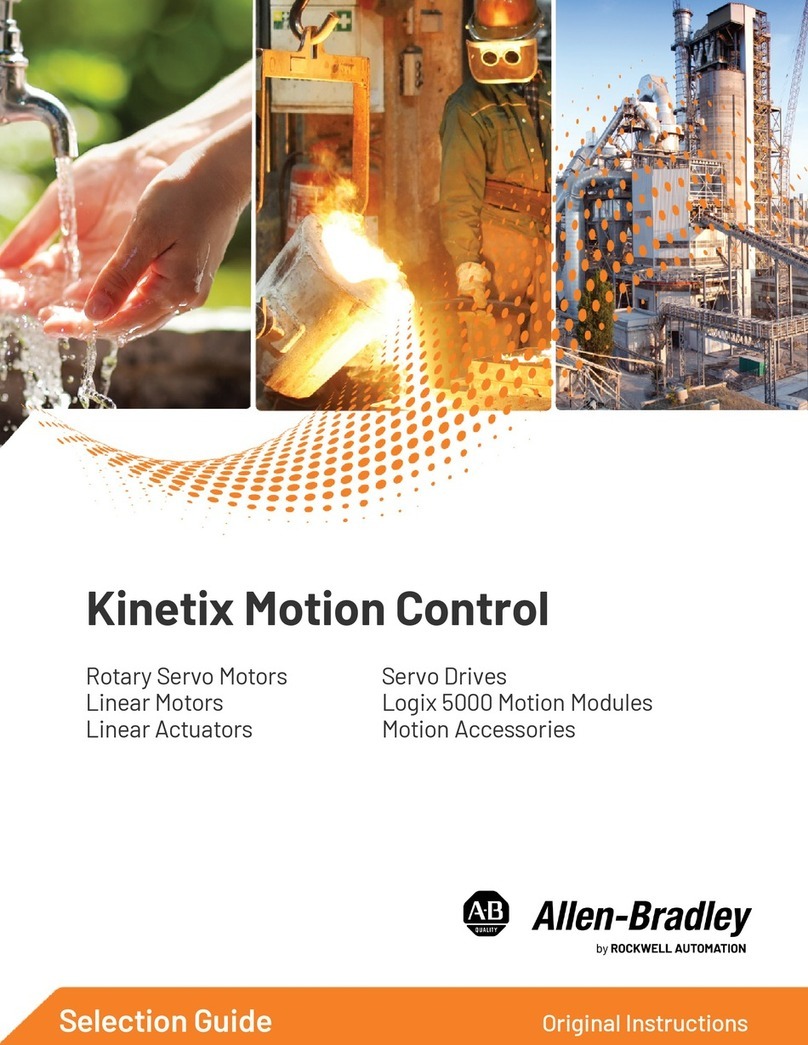
Rockwell Automation
Rockwell Automation Allen-Bradley Kinetix 5700 Series Selection guide

Baumer
Baumer HOG 10 Mounting and operating instructions
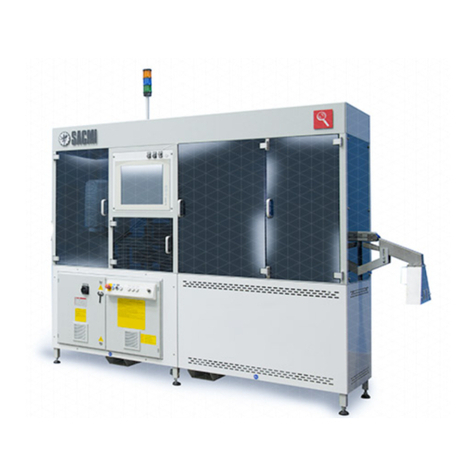
Sacmi
Sacmi Imola CHS Series instruction manual

Alien
Alien KYDZ-306 Quick installation guide
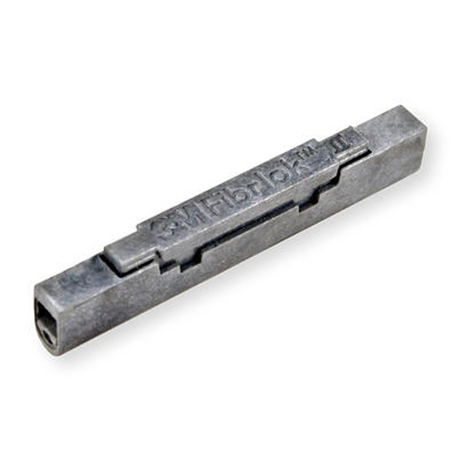
3M
3M Fibrlok II instructions
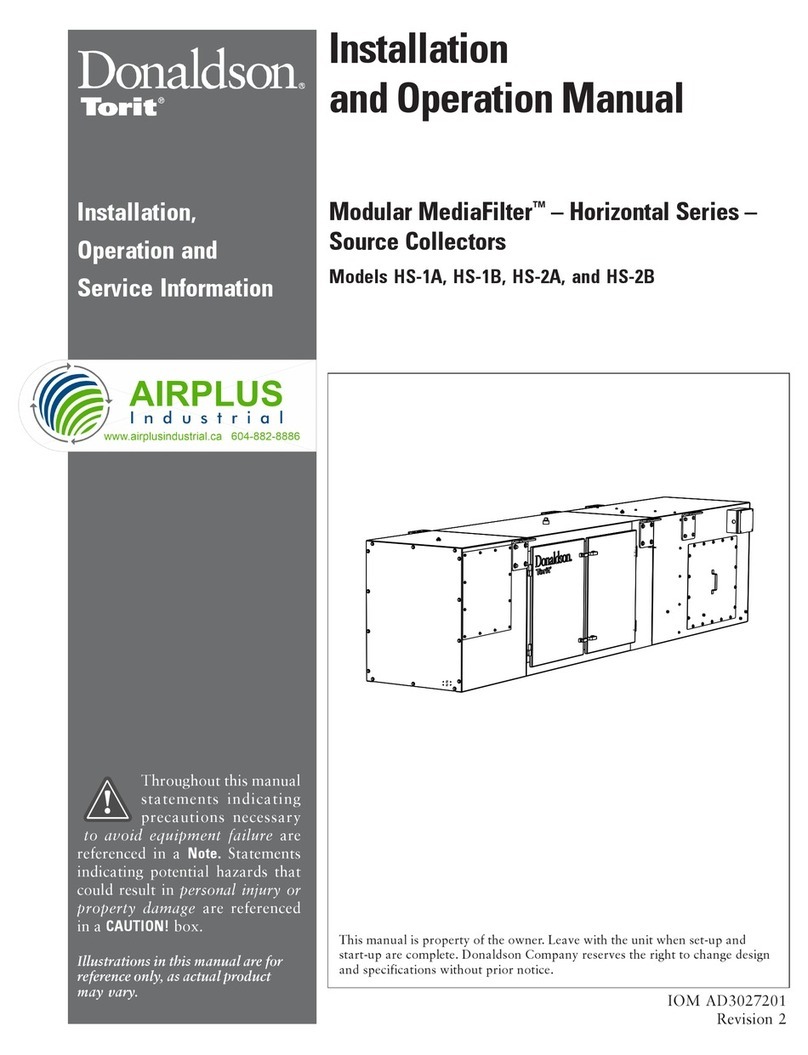
Donaldson Torit
Donaldson Torit Horizontal Series Installation and operation manual
